-
Posts
412 -
Joined
-
Last visited
Content Type
Profiles
Forums
Resource Library
Events
Gallery
Blogs
Store
Community Map
Posts posted by hexagon789
-
-
3 hours ago, murphaph said:
Sorry to revive this old but fascinating discussion but it's better to keep all this information together.
Does anyone know if and when the mk2as with the silver window frames lost those silver frames under black paint?
The nice Bachmann mk2a models show silver window frames but with IE decals. Did such a combination ever actually exist in reality?
I can find this photo without such window frames taken in 2002, so towards the end of the fleet's life:

So if they had silver frames, they were painted out by the end.
I have the relevant journals which detail the introduction of the fleet to traffic, bear with me a few minutes and I'll see if window frames get a mention.
-
 2
2
-
-
8 minutes ago, Broithe said:
Automatic, nosing in a bit fast, hit the throttle instead of the brake...
... then kept pressing the 'brake' harder...
At a guess.Perhaps, I'm just a bit suspicious of the clearances and how they managed to avoid hitting anything but the fence.
-
-
I think this takes some beating:

Stirling railway station today.
In a bizarre turn of events also car ended up on the line at Fort William today as well!
-
 2
2
-
-
Not sure if these have been posted before, but they were only uploaded to YouTube in April.
Both are by the same author - Phil Thomas Trains.
The first video is of trains around Dublin in May and December 2002:
The second is of trains at Kildare taken in May 2002:
Having watched both now I found them most enjoyable, and good reference material for any 2000s-era modellers.
Enjoy!

-
 4
4
-
 1
1
-
-
I have a noted formation to add:
August 1976 18.10 Hueston-Galway "Cú na Mara"
5603, 5151, 5404, 5226, 5233, 5156, 5223, 5152, 5236
Notes:
5603 - Generator Van
5151 & 5152 - Composites (24F, 24S)
5404 - Kitchen Standard (30S)
5226, 5233, 5223, 5236 - Standards (64S)
5156 - Standard (54S)
-
It suddenly occurred to me this evening after finding a photo of a Mk3 which answered another one of the mysteries of the CIÉ/IÉ fleet that I was now in a position to answer my own questions after all these months!
In case it's of interest to anyone I'll summarise as follows:
On 10/18/2017 at 4:48 PM, hexagon789 said:I'm currently compiling a list of Irish Coaching Stock for use in any article I'm planning to right and while I've had no real issues with the Mk2d stock I've found a few discrepancies with certain Mk3 vehicles that I'm hoping someone can clear up for me.
For reference I'm looking for the state of the following vehicles in about 2004:
7107 - was this an Open Composite seating 36F/36S or an Open Standard seating 64?
Internally 64 seats
7147 - was this an Open Standard seating 72, 66 or 64 plus a wheelchair space?
64 seats plus wheelchair, 7148 same
7157 - was this an Open First seating 64 or an Open Standard seating 64?
64 seats but unlike 7107 entirely in table bays
Additionally I'm curious as to how the two Executive Mk3s were used. I believe they were used in specials and so-called "Executive" trains but I assume they were also used in normal service trains? If so what services were they typically used in and as which type of vehicle, I've seen reference to 7162 being used as a dining car, is this when used in Executive trains or in lieu of a CityGold vehicle or something?
Specials primarily, 7161 entered service originally as a 64-seat First
Finally I've got a vague idea of how the seats were generally formed but if someone could let me know if the following is broadly correct:
Dublin-Cork CityGold services: Typically Generator Van-CityGold-Buffet-5/6 Standards
Other Dublin-Cork: Typically Generator Van-Composite-Buffet-4/5 Standards
Dublin-Galway/Waterford/Tralee/some Limerick services: Typically Generator Van-Composite-Buffet-4/5 Standards
Dublin-Westport: Typically Generator Van-Standard-Buffet-3 Standards
Broadly correct though the Westport sets conveyed First Class until 2003 so would've had a Composite and many rakes to Westport were actually full length sets.
On 8/26/2018 at 10:04 PM, hexagon789 said:1. When and what was the first service run with Mk3 stock?
4th July 1984, two sets entered service on Dublin-Cork workings
2. When were the Mk3s permitted to run at 100 mph as opposed to 90 mph?
From the May 1995 timetable change
On 8/26/2018 at 10:04 PM, hexagon789 said:3. What type/types of Wheel Slide Protection were they fitted with?
Later BR type as fitted to BR Mk3b carriages
On 1/25/2019 at 6:55 PM, hexagon789 said:Does anyone know what the original plan or indeed formation of Mk3 sets was originally in the mid-eighties? From what I gather originally there were only three or four Firsts. The ITG book from 1987 describes 7140 as a 72-seat Standard but I've seen two photos of it with First Class markings, though the seating appears not to line up with the windows, as though it was a possibly a 72-seat First, with the other three vehicles being 64-seaters, though it could be just the photo.
Was the original set-up EGV+Buffet+Standards on non-Cork line services (if indeed the Mk3s operated any such services early on) and EGV+First+Buffet+Standards on Cork services?
Originally the "Firsts" were identical to Standards, 7107 and 7110 weren't fitted out with the 64-seat layout until 1986 and 7157 didn't enter service until mid-1987.
Finally, despite what the ITG and Platform 5 stock books say, it appears that 7110 never reverted to a 72-seat layout as the books suggest but internally remained identical to 7107 with 64 seats.
-
 2
2
-
-
Just taken delivery of some more archive journals, one of which is the October 1970 one with an article on the 800 Class. Within the article it is stated that the maximum recorded speed was 94mph below Kilmallock near Dundrum when 800 herself was on a demonstration run shortly before the Cork Mails were accelerated in July 1939. In a similar manner to the GWR in Britain, there was no specified maximum linespeed only permanent speed restrictions for curves and junctions.
There are also a number of timing logs which demonstrate speeds in the 70s including a maximum of 79 on the up Enterprise in 1951 and 80.5 on the down working also I'm 1951. By this point linespeed was officially 70mph rather than unrestricted.
-
 1
1
-
 1
1
-
-
1 hour ago, DiveController said:
I've seen that before, quite a rare leaflet I should say I've never seen one up for sale for instance. Excellent illustration of how the Mk3s looked internally when new, though I think the switch to have more table bays in preference to the original predominantly airline seating arrangement was probably better.
-
9 minutes ago, DiveController said:
I didn't mean to restart the great orange debate as we've had in the past but the coach is indoors, and aside from camera/exposure/film/developing variations, if you look carefully above the cantrail you'll see the same colors from the perspex lighting in the roof
Neither was I, just passing comment on how the lighting changes the perception of colours
-
 1
1
-
-
1 minute ago, jhb171achill said:
They changed the painting method around then. The idea was that the colour would be the same. No change was planned, but the new method resulted in a brighter, more “orangey” finish! Thus, for a while, both could be seen.
As in the Supertrain Mk3s carried different "golden browns"? I was aware that occurred with the Tippex livery and indeed is quite obvious in many rakes into the mid-1990s but I wasn't aware the base colour changed shade with the Supertrain livery.
-
-
Sorry, don't think that link works properly. This should link directly to the relevant table: https://timetableworld.com/ttw-viewer?token=d63f99a5-4f24-4799-ad06-99f4a8827ea3
-
 3
3
-
-
Some people may recall a website called Timetable World. This previously held a small number of scans of British/American/German railway timetables from the 1940s to 1960s.
After remaining unchanged first some years, it has now been updated with an expanded collection of timetables.
More material is to be added, but there is now an Irish timetable on the site, the CIÉ 1983 timetable, which may be of interest to some:
https://timetableworld.com/viewer?token=66d160cc-d943-40f6-be38-842d1602845c#
I believe there are more Irish as well as British and international timetables to come soon.
-
 3
3
-
 1
1
-
-
12 minutes ago, murphaph said:
So this train always followed the Dublin train it was connecting with as far as Claremorris? Did it follow or lead the Westport train to Manulla Jct?
In the 1990s, connections to Ballina were only offered to/from Dublin and after Manulla re-opened passengers were not accommodated from Claremorris anymore even though the branch train still ran there to run-around.
Going off this video, it appears the branch train preceded the Dublin-Westport to Ballina, and followed the Westport-Dublin to Claremorris:
-
 2
2
-
-
9 minutes ago, murphaph said:
Did the Ballina branch train sit in Claremorris between duties on the branch or did it sit in Ballina or Manulla Jct?
Claremorris because there was no facility to run-round at Manulla in later years.
-
 1
1
-
-
2 hours ago, murphaph said:
The 121s didn't have dynamic brakes, right? I don't think anything Irish except the 201s had any form of dynamic brakes.
For locomotives, yes. Only the IÉ 201s had dynamic (rheostatic) brakes fitted and it was permanently isolated.
None of the older GM (or MV or Sulzer) locos even had the capability - strictly tread brakes only.
-
 2
2
-
-
20 hours ago, Mayner said:
Enthusiasts tend to overlook the 1965/66 rebuilding of C233 & 234 with Maybach MD-650 (1200hp) engines, the conversion seems to have been successful with the two Maybach-Metrovicks (which unlike the GM rebuilds regularly worked in multiple with B141/181 Class).
Perhaps that is the case, but my understanding was the conversion wasn't found to be that reliable with the two locos stood out of traffic for a period while the other "C"s were being converted to "B"s with GM engines.
20 hours ago, Mayner said:One of my personal disappointments is that CIE did not top and tail Dublin-Limerick and Dublin-Waterford Supertrains with B201s in a similar manner to the BR Edinburgh-Glasgow Intercity or NIR Enterprise as sort of Irish diy IC75 service.
I know CIÉ did consider driving trailers for the MkIID sets on the Limerick and Waterford lines (not sure if they were to be new build or conversions).
Your "IC75" brings up something else I've just recalled and wondered about - both the Park Royal and Cravens were listed as 80mph vehicles (at least they were designed for running at 80) in their official spec when new, yet CIÉ never ran faster than 75 on the Cork Road until the Mk3 stock came in.
Was there a plan to allow 80mph running on the Cork Road in the 1960s when the Cravens were being introduced or was the 80mph design speed more of a 'nominal' figure?
Not directly specifically at yourself Mayner, more a general observation and pondering.
Edit: perhaps this would be better discussed in the "1960s" thread rather than this one? Perhaps mods could advise/move, thanks
-
19 hours ago, Mayner said:
Track on the IE network got into a really bad state in the early 1990s due to deferred maintenance and the pounding received from heavy locomotives, temporary speed restrictions were imposed on many lines after a system wide safety audit following the Knockcrockery de-railment.
The Ballina Branch was one of the worst sections of Network and Ennis-Claremorris was closed to provide material for emergency track repair on the branch and other sections of the Midland.
I seem to recall it was dropped to a 40 limit in the early 1990s presumably because of track condition. I think it was then raised to the present 60 after full relaying?
19 hours ago, Mayner said:The external auditors were shocked at the state of p.w. on the Midland the 90Lb rails installed by the MGWR & GSR in the 1920s were inadequate for 071 & 201 locos and then current line speeds (60-70mph).
Gordon Bennett(!), I don't know what I was expecting but 1920s vintage is about 30-40 years older than I anticipated!
On 9/25/2020 at 4:43 PM, josefstadt said:At the start of 1972 there were 20 C class locomotives still, to some degree, operational. So, while some of these might have been used to shunt members of the Mk IId fleet around Inchicore works, it is most unlikely that any C class hauled these carriages out on the main line. By the time the Mk IId fleet were introduced into traffic, in December 1972, all the C class had been re-engined. The B201 class were, on the other hand, used on service trains composed of Mk IId stock one a regular basis. The attached photo by Barry Carse appeared in the February 2020 edition of the IRRS Journal (V29, No. 201) and shows B231 working the 13:30 Dublin Heuston to Cork train (7 x Mk IId) through Knocklong on 21 April 1973.

Nice shot, I'd rather overlooked the whole C>B conversion still being in progress but it does seem unlikely a 550hp "C class" being entrusted with a frontline 'Supertrain'.
-
13 minutes ago, jhb171achill said:
Even at 30 mph and in a carriage (not the engine), the Loughrea branch was, I think, the roughest track I ever covered anywhere in the world!
Ballina looked rough in the 1990s based on this footage:
(See 1 min 45 to 3 mins 05)
-
 1
1
-
-
7 hours ago, Mayner said:
According to Irish Metrovick Diesels B201s for a short while B201s worked Dublin-Cork Trains of 6-7 MK 2D coaches in the 1972 timetable. The 13:30 ex Heuston & 17:30 ex Cork were regular B201 hauled Supertrain workings.
Following re-building B201s regularly hauled long distance passenger trains in the late 60s early 70s including Heuston-Cork, Limerick and Tralee trains, Connolly Galway and Sligo workings plus some main line freight workings including Dublin-Drogheda bulk and bagged cement (H wagons) trains.
Its possible the operating people preferred the B201s to the Yanks and Bo Bos for main line passenger working as they may have been steadier at speed with their Commonwealth bogies than the GMs.
After the 1973 "Oil Crisis" CIE dropped its policy of operating light fast frequent trains, CIE returned to its earlier policy of running less frequent heavier trains using 001 Class or pairs of small GMs, though the B201s continued to Drogheda-North Wall cement trains into the late 70s in addition to Dublin inner and outer Suburban duties.
I spent a Saturday afternoon watching a procession of B201 hauled bagged and bulk cement trains passing Howth Junction while surveying a site on the then new Baldoyle Industrial Estate in 1978.
Hopefully a B201 is on the IRM to do list.
I suppose once re-engined, a B201 was more of a "puller" than most of the GMs. Even with the same nominal engine output as a B181, the MV electrical equipment gives them 842hp at the rail compared to 810hp for a B181.
I would agree the bogies were smoother riding, that also seems to have been one of the few redeeming features of the original 'A's.
Though it doesn't always help, BR Class 47s have Commonwealths and they had a reputation for rolling like a ship in a Force 12 at 95mph!
Must try flickr again for a photo, now knowing they did have a booked working I can narrow my search. That photo above was one I was already aware of.
-
 1
1
-
-
4 minutes ago, K801 said:
interesting, thanks hexagon789
Here we are, 224 shunts Supertrain AC stock at Hueston in late-September 1978:

-
 6
6
-
-
17 minutes ago, K801 said:
Has a C class ever been observed/documented hauling Mk2 a/c stock, even a transfer move of stock?
Not in service that I'm aware of but ECS definitely, give me a tick and I'll find you a photo...
-
29 minutes ago, jhb171achill said:
This hasn’t come out the way I intended! Any thoughts on how to put up a table like this on here?
I tried earlier on a different forum and couldn’t load it there at all.....
It looks okay from my end, just a bit squished if you view it in "mobile" rather than "standard" view. You've obviously put a lot of effort into it jhb and the detail is excellent. I myself find editing and producing tables on the web leads to mixed results sometimes!
-
 1
1
-
.png.c363cdf5c3fb7955cd92a55eb6dbbae0.png)

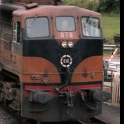
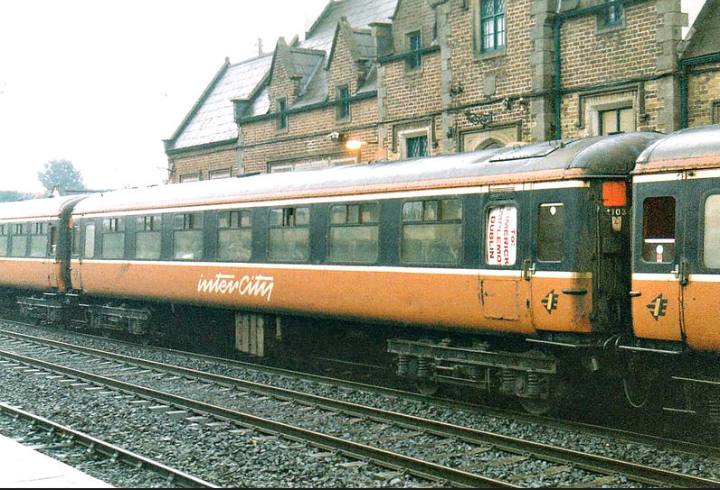
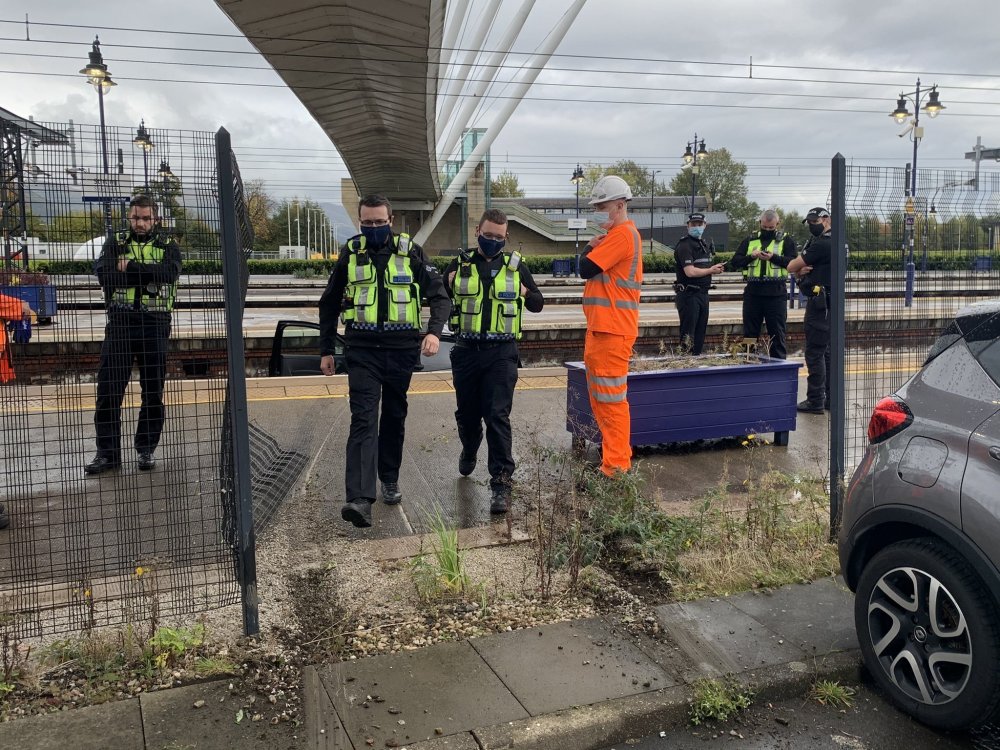
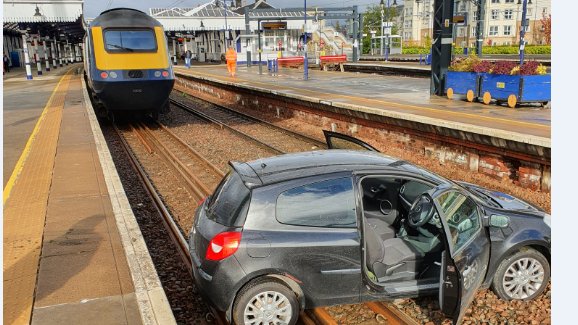


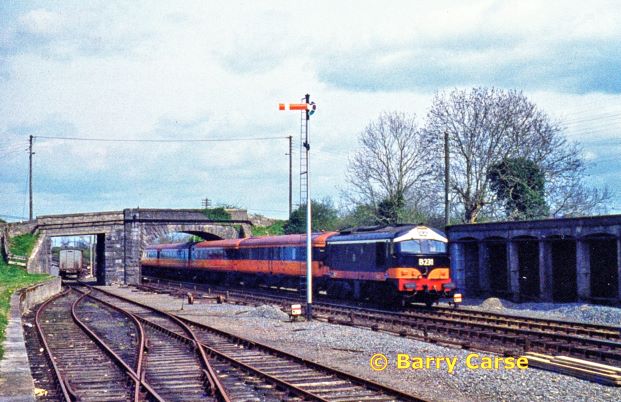

Question re CIE Coaching Stock ( Mk2A etc)
in Photos & Videos of the Prototype
Posted
We'll I've been through the Journals and while they describe the livery, no mention is made of the window frames sadly.
It's an ex-Mk2c Open First
The original Mk2s (sometimes known as Mk2Z) were vacuum braked and dual heated, some later gained air brakes. These had centre doors.
The Mk2A were the first strictly air-braked ones though some were later converted to vacuum for local requirements, again centre doors.
Mk2B lost the centre doors and had as you rightly say, wide wrapround end doors.
Mk2C were to get air-con so we're slightly longer and internally had lowered ceilings and ducts for the air-con
Mk2D were the first air-con and have deeper door droplights than the other air-cons
Mk2E had diagonally opposite toilets in second class
Mk2F the same plus improved ait-con system with only one fan unit on non-brake vehicles.
The Irish Mk2 AC stock while labelled "D" is really the Mk2E design but with the superior Mk2F air-con system!
Confused yet? ;)